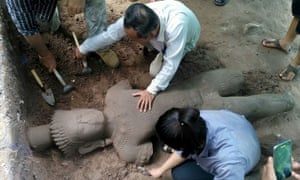via Boing Boing by Andrea James

Ghosts of the Arctic is a collaboration by Untitled Film World that captures some remarkably intimate images of wildlife in the coldest and most remote corners of the world.
Continue reading
=============================
via Interesting Literature
A summary of a classic novel
F. Scott Fitzgerald left behind one of the most perfect novels ever written, The Great Gatsby: at least, that is the version of many critics. But even Fitzgerald once said, ‘I’d rather have written Conrad’s Nostromo than any other novel.’ Yet Nostromo is a challenging and multi-layered novel, demanding much of its readers, even when compared with the high demand Conrad places on his other fiction. What is Nostromo about, and how should we analyse this classic modernist novel about South American mining, capitalism, and revolution?
Continue reading
=============================
via OUP Blog by David N. Myers

home building architecture by stux. Public domain viaPixabay
How have the Jews survived over the centuries? This is a question that has intrigued and perplexed many. While powerful world empires have risen and fallen, this miniscule, largely stateless, and often despised group has managed to ward off countless threats to its existence and survive for millennia. In seeking to answer the question, a wide range of theological, political, and sociological explanations have been proffered.
Clearly, the Jews developed a remarkable capacity to move, integrate, and adapt to different settings over the course of time. But what lies behind that adaptive mechanism? Two unlikely and somewhat controversial factors can help us understand: assimilation and antisemitism. Far more commonly, these explanations are seen as causes of Jewish decline or disappearance. But in fact they have served, especially in tandem, to sustain the Jews.
Continue reading
=============================
via the Guardian by Agence France-Presse

Archaeologists excavate a statue believed to have once stood guard over an ancient hospital at Cambodia’s famed Angkor temple complex. Photograph: HANDOUT/AFP/Getty Images
Archaeologists have unearthed a large, centuries-old statue that is believed to have once stood guard over an ancient hospital at Cambodia’s famed Angkor temple complex.
The nearly two metre tall carving, which is thought to be from the late 12th to the early 13th century, was discovered during a dig on Saturday, said Long Kosal, a spokesman for Apsara Authority – the state agency charged with managing the complex.
Continue reading
=============================
via 3 Quarks Daily: Lisa Zyga in Phys.org

Can Bell correlations be explained by retrocausal influences? Figure shows an influence diagram representing the possible causal influences in a model with no retrocausality.
Credit: Leifer and Pusey. ©2017 The Royal Society
Although there are many counterintuitive ideas in quantum theory, the idea that influences can travel backwards in time (from the future to the past) is generally not one of them. However, recently some physicists have been looking into this idea, called “retrocausality”, because it can potentially resolve some long-standing puzzles in quantum physics. In particular, if retrocausality is allowed, then the famous Bell tests can be interpreted as evidence for retrocausality and not for action-at-a-distance – a result that Einstein and others skeptical of that “spooky” property may have appreciated.
Continue reading
=============================
via OUP Blog by Manuel Ferrer and Andrés Moya

dna-microscopic-cell-gene-helix by typographyimages. CC0 Public Domain via Pixabay
Each and every part of us harbours its own microbial ecosystem. This ecosystem carries some 100 billion cells, known as the microbiota. They started inhabiting our bodies 200,000 years ago, and since then we have evolved side by side to configure a balanced system in which microbes can survive in perfect harmony, provided no perturbations occur.
A number of standard methods exist for decoding their identities and genetic content. Sequencing of the 16S subunit of the bacterial ribosome from DNA reveals that there are over 5,000 species of microbes living at one with us, and that only a minor fraction, about 2%, is common to most people. By sequencing this gene from RNA, we know that not all the microbes inhabiting our bodies are active but just one in every five. Sequencing of the microbial DNA or RNA reveals that about eight million microbial genes collaborate with our genes and that only one out of 33 (or 3%) is common to most people.
Continue reading
=============================
via 3 Quarks Daily: Sudip Bose in American Scholar

The Incident at Teplitz (1887), by Carl Rohling, depicting an event that may have been apocryphal
When Ludwig van Beethoven arrived in the Bohemian spa town of Teplitz in July 1812, he was ill, heartbroken, anxious about his finances, and growing deafer by the day – the dismal weather that greeted him, cold and sopping wet, could not have lifted his spirits all that much. He had been to Teplitz before, indeed, the previous summer, when his doctor had similarly ordered him to take a restorative cure. The town was renowned not only for its hot springs but also for its sylvan setting, the deep forests and pristine lake offering the sick and weary the promise of recuperation. Royals and other noble types frequented the spa, and during the summer of 1812, that glittering crowd would have been abuzz with news of Napoleon’s recently commenced invasion of Russia. Beethoven, the consummate anti-aristocrat, had no wish to hobnob with such a crowd. Yet there was one illustrious man, a regular at Teplitz, whom the composer was desperate to meet: Johann Wolfgang von Goethe.
Continue reading
=============================
via Big Think by Paul Ratner

How much of the human genome, our genetic blueprint, actually makes us who we are? New work by an evolutionary biologist at the University of Houston suggests that only up to 25% of the human genome is functional. The other 75% are so-called “junk DNA” - useless sequences that don’t play a role in the important chemical reactions inside us. This conclusion goes sharply against the estimate of 80% functionality proposed by the ENCODE project, an international public research consortium that has led the way in human genome exploration.
Continue reading
=============================
via the Guardian by Kim Kelly

The Wicked Witch of the West and Hillary Clinton. Composite: Rex Features
Men have always feared powerful women, Kristin J Sollee argues in her new book, Witches, Sluts, Feminists: Conjuring the Sex Positive, and the witch is the ultimate personification of that terror. “Witches, sluts, and feminists are the trifecta of terror for the patriarchy,” Sollee explains. “To me, the primal impulse behind each of these contested identities is self-sovereignty … witches, sluts, and feminists embody the potential for self-directed feminine power, and sexual and intellectual freedom.”
Continue reading
=============================
via An Awfully Big Blog Adenture by Hilary Hawkes

What I’ve come to realise is that all anyone really needs to be a writer is Winnie the Pooh Wisdom.
For every eventuality: exciting moments, rejection moments, cloud nine moments and general slogging along day to day moments you might encounter on the writing journey, the little bear (or his friends) would know how to handle it all.
New book idea moments:
“As soon as I saw you, I knew an adventure was going to happen.”
Looming deadline moments:
“Rivers know this: there is no hurry. We shall get there some day.”
Challenging review or feedback moments:
“Weeds are flowers, too, once you get to know them.”
Working up courage to send manuscripts out moments:
“You can't stay in your corner of the Forest waiting for others to come to you. You have to go to them sometimes.”
Thinking up new character moments:
“Piglet: “How do you spell 'love'?" Pooh: “You don't spell it...you feel it.”
Continue reading
No comments:
Post a Comment